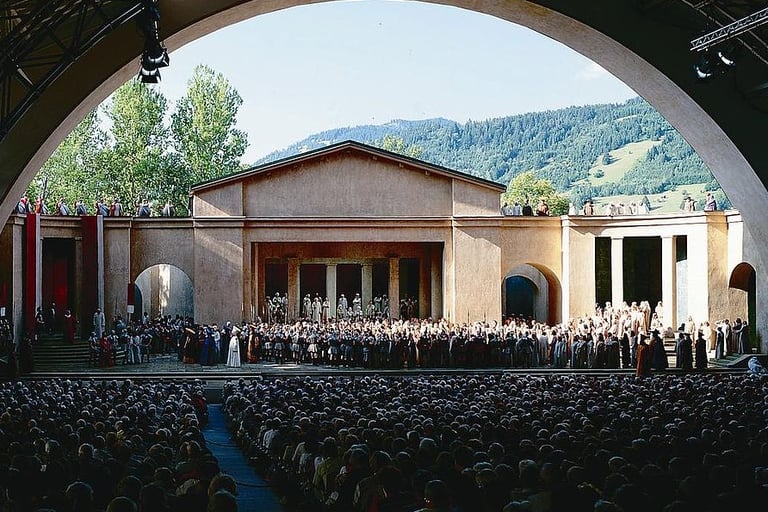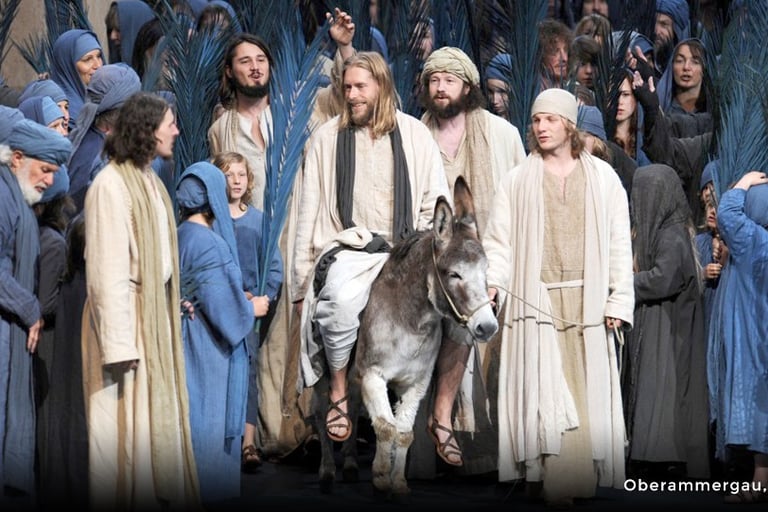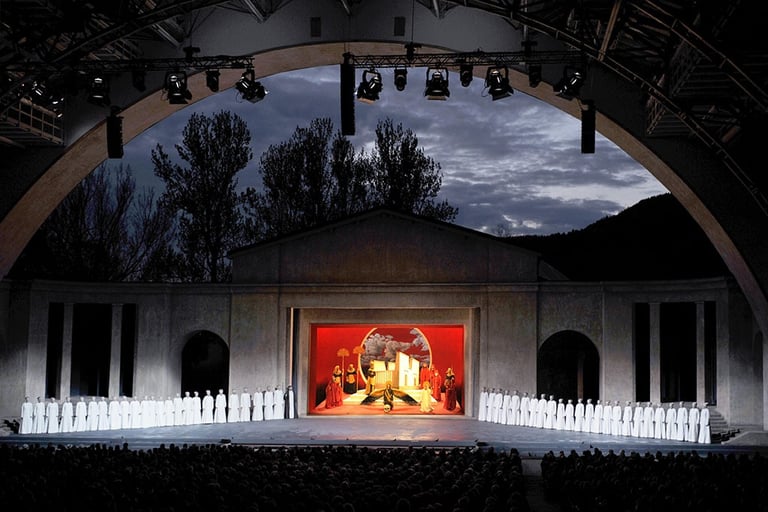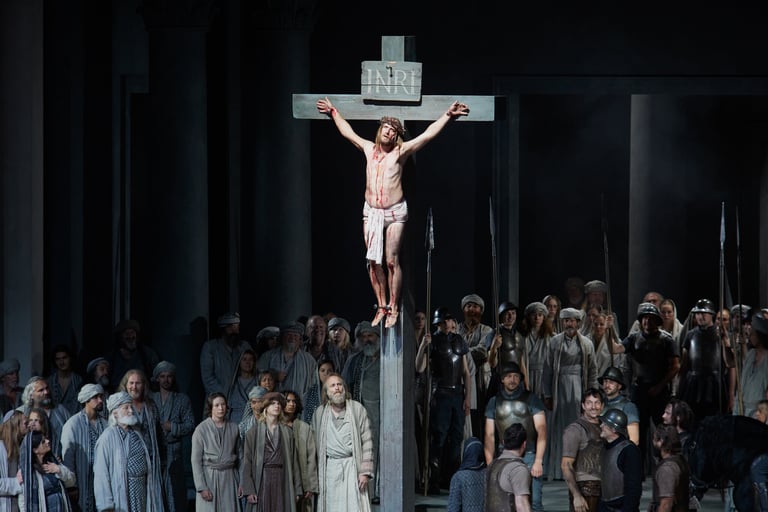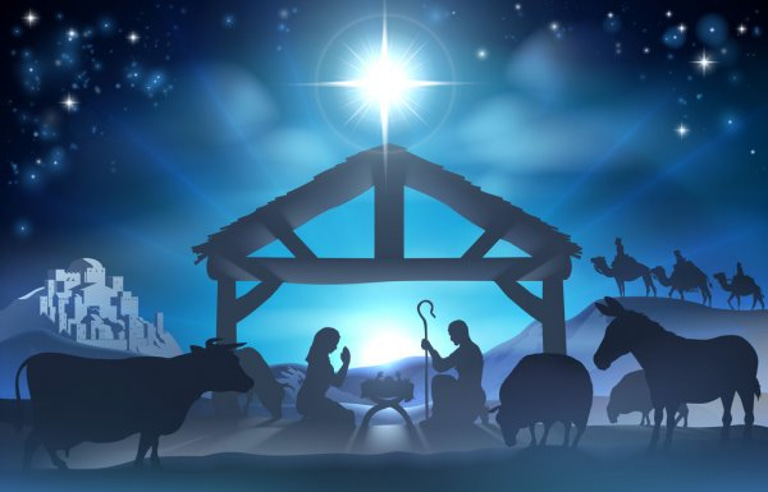Learn The Story Behind Germany's Famous Passion Play
Uncover the story of the Passion Play in Germany. From its medieval roots to modern times, see how it remains culturally relevant. Read more!
Grace Callahan
2/2/202511 min read
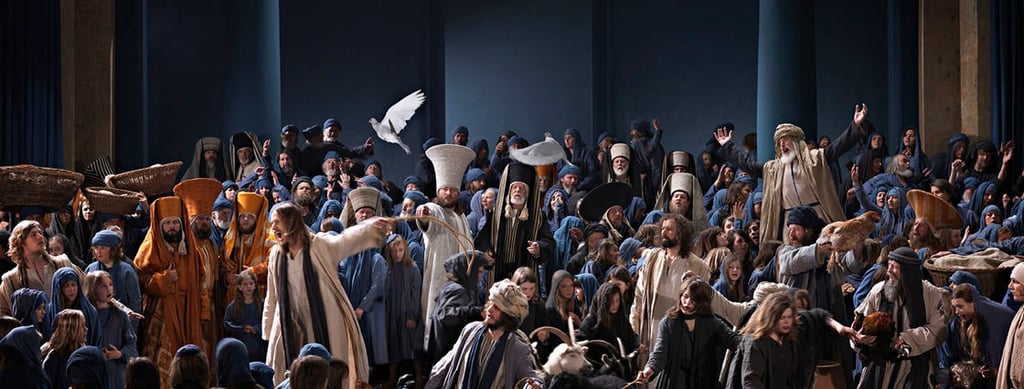

Introduction:
The Passion Play has long been a cornerstone of German religious and cultural life, bringing the final days of Jesus Christ to vivid life. This rich tradition dates back to the Middle Ages when small village performances first captured the hearts of local audiences. Germany's deep connection to this art form shines through in events like the famous Oberammergau Passion Play. In this article, we will explore the fascinating history of the Passion Play, tracing its origins from humble beginnings to the magnificent productions we witness today. Join us as we uncover the significance and legacy of this enduring tradition.
The Medieval Origins of the Passion Play in Germany
The Passion Play—an essential piece of theater and religious history—has deep medieval roots, particularly in Germany. It's fascinating to think about how the church and society, back in the day, used performance art to teach something as profound as the Bible’s most intense narrative. Have you ever wondered how theater evolved from mere entertainment to a religious tool in a time when literacy was limited?
Early Christian Influences: Medieval Germany was a place where the line between faith and daily life blurred. The Passion Play, like other early Christian performances, was not just an artistic endeavor—it was a way to live the story. Bible stories, especially those surrounding Christ's death and resurrection, became an experience. This was more than a script. It was a means to visualize, feel, and understand the Passion, to draw people into the story. Imagine being in an illiterate society, where watching the Passion Play was one of the few ways you could "read" the Bible.
Church Involvement: The Church wasn't just a passive observer—it was the driving force. It actively encouraged these plays, using them as educational tools. The masses needed something tangible to grasp the divine mysteries. And what better way to bring the Bible’s complex stories to life than through the powerful medium of performance? The Church saw these plays as opportunities to reach beyond sermons and prayers, using drama to teach, inform, and reinforce religious doctrine. It's almost as if they realized that the visual and emotional impact of theater could reach the hearts of people who might never open a Bible themselves.
The First Recorded Performances: Some of the earliest recorded Passion Plays in Germany were staged in places like Trier and Freiburg. Imagine the excitement in those towns as the community came together, not just to observe but to live the biblical story. These early performances set the stage (no pun intended) for the future of Passion Plays, providing a powerful template that would echo throughout centuries.
The Influence of Religious Festivals: Over time, the Passion Play became an inseparable part of Easter celebrations. It’s hard to imagine an Easter without the deep emotional weight of the Passion story brought to life on stage, isn’t it? The performances became not just rituals—they were central to how people observed Easter. The church had successfully woven the Passion Play into the fabric of Christian tradition, turning a seasonal festival into a collective act of faith.
The Role of Passion Plays During the Black Death
The Black Death (1347–1351) wasn't just a time of death and despair—it was a moment in history that reshaped the way communities viewed faith, survival, and divine intervention. The Passion Play, often a backdrop for religious and cultural expression, found new significance during this tragic chapter. Can you imagine the emotional weight of watching a play about death, suffering, and resurrection while facing your own mortality?
A Turning Point: The Black Death created a seismic shift in how the Passion Play was perceived and performed. It wasn’t just a religious event anymore; it became a cathartic experience for communities ravaged by plague. The tragedy of Christ's suffering and death took on a raw, emotional relevance. The fear of death and the struggle for survival amplified the themes of resurrection and hope within the Passion Play, making them even more powerful. The famous outbreak of the Oberammergau Passion Play in 1633 is a perfect example. After the Black Death devastated the town, the villagers promised to perform the Passion Play every ten years if God spared them. That promise became a symbol of faith, hope, and survival. It wasn’t just a vow—it was a lifeline, a way of keeping their faith alive in the midst of death.
Promise and Survival: What’s truly moving about these performances during the plague years is how communities used them as a form of devotion. The Passion Play became a communal act of pleading for mercy, a way to express both their sorrow and their resilience. Amid sickness, despair, and death, these plays became a statement of survival—an offering to God that their faith remained unbroken. It was as if they were saying, "We endure not just for ourselves, but for the promise of resurrection." During times of plague, the Passion Play allowed people to process their grief collectively, to face their fears and hopes in one shared moment. How could you not find solace in that kind of collective experience when the world felt like it was falling apart?
Oberammergau’s 1633 Promise: Oberammergau’s vow to perform the Passion Play every decade after the plague hit is both deeply moving and historically significant. The story of how the town was spared from further devastation after their promise is nothing short of miraculous. But the play itself became a symbol—one of faith, survival, and divine intervention. The villagers didn’t just perform the Passion Play as an act of worship; they performed it to keep their word to God. To them, it was a sacred pact, an ongoing declaration of faith that would continue for generations. Every performance became more than just a play—it became an unbroken thread of hope and devotion stretching through centuries. Can you imagine how they must have felt, knowing that each performance kept that promise alive, binding the community together in an eternal act of faith?
The Black Death and the Passion Play are inextricably linked—one a time of unimaginable suffering, the other a timeless act of hope and promise. It’s a powerful reminder that even in the darkest times, faith, art, and community have the ability to bring light.
The Development of the Passion Play in German Villages
When you think about the roots of the Passion Play, it’s incredible to imagine how this grand religious tradition started in small, rural villages. German villages, like Oberammergau, weren’t simply adopting something from the big city—they were creating a deeply personal, community-driven expression of faith that would eventually become a cultural staple. Have you ever wondered how something so profound could spring from the humble beginnings of a tight-knit community?
Rural Performances: In the 16th century, German villages began their own traditions of the Passion Play, with Oberammergau often cited as one of the most famous examples. These weren’t grand theater productions with professional actors and impressive stagecraft. No, these were raw, heartfelt performances by villagers who saw it as their duty to tell the most important story in their faith. Imagine what it must have been like for these rural communities to come together and take on such a significant role in the telling of Christ’s Passion. It wasn’t just a performance; it was a reflection of their collective devotion, a way to solidify their connection to the divine. And in a time when literacy was limited, this performance might have been one of the few ways to experience the Bible’s deepest truths.
Local Casts and Community Involvement: What’s striking about these village productions is the heavy involvement of the local people. These weren’t professional actors—they were farmers, craftsmen, and tradespeople, all coming together to play the roles of biblical characters. There’s something incredibly powerful about that, right? The idea that the Passion Play wasn’t just about watching someone else tell the story, but about living it in your own community. The casting of local villagers added a unique sense of authenticity to the plays. When Christ, Mary, or Judas were portrayed by your neighbor, the connection felt even more profound. It wasn’t just a performance—it was the story of your community, your faith, your struggle.
Spread Across Germany: What began in these small villages didn’t stay small for long. The Passion Play, with its growing popularity and deep cultural roots, spread from rural communities to the bustling cities of Germany. Over time, these performances became part of German cultural heritage, not just as a religious observance but as a community tradition that brought people together. As the plays reached larger cities, they retained the same communal spirit, but now there was a broader audience—one that included both villagers and city dwellers alike. What’s fascinating is how this humble village tradition evolved into a cornerstone of German culture, blending the sacred with the cultural in a way that would inspire generations to come.
In a sense, these early Passion Plays weren’t just performances—they were a call to unity, to shared faith, and to a collective identity that transcended individual communities. What began as a small, rural expression of devotion became a national tradition that speaks to the heart of German culture and religion. Isn’t it remarkable how something so personal can grow into something so universal?
The Evolution of Passion Play in the 19th and 20th Centuries
The Passion Play didn't just remain static—it evolved. And it makes sense, right? As the world changed, so too did the ways in which people expressed their faith and devotion. In the 19th and 20th centuries, the Passion Play became a canvas on which larger cultural and emotional movements painted their mark. But how did these changes really shape the heart of the performance?
The Influence of Romanticism: The 19th century was a time of intense emotional and artistic upheaval, and German Romanticism had a profound impact on the Passion Play. Romanticism, with its emphasis on deep emotion, nature, and individualism, infused these plays with a heightened sense of drama and sentiment. It’s almost like the Passion Play, which was already rich in emotion, was now taken to a whole new level. The previously restrained portrayal of Christ’s suffering became more vivid and intensely personal. Actors were encouraged to feel their roles, not just play them. The aesthetic of the play shifted too—no longer just simple rural performances, but grander, more visually stirring productions. The tone of the play became more dramatic, drawing the audience into an almost spiritual experience. And who could resist that emotional pull when the world around them was starting to embrace the idea that art, in all its forms, should speak directly to the soul?
Modern Innovations: Fast forward to the 20th century, and the Passion Play had undergone a massive transformation. Gone were the days of simple, small-town performances. The introduction of elaborate sets, intricate costumes, and even full orchestral scores completely changed the atmosphere. The plays weren’t just plays anymore—they were spectacles. Performances were designed to be immersive, pulling the audience deeper into the story. Can you imagine witnessing the whole city of Oberammergau transformed into a living tableau, with every street, every face, contributing to the grand drama? The use of lighting and dramatic music added another layer of intensity, allowing the audience to experience Christ’s Passion not just visually, but emotionally. The performances were no longer just about watching the story—they were about feeling it. This evolution made the Passion Play not just an important religious event, but an artistic one.
Nationalism and Identity: Perhaps one of the most significant, and often overlooked, developments in the Passion Play’s evolution was its role in shaping German national identity, particularly during times of national upheaval, like the World Wars. The Passion Play became more than just a religious expression—it became a symbol of German resilience, unity, and identity. In a time when the country was torn apart by war and division, the Passion Play reminded the German people of their shared cultural heritage. The themes of suffering, sacrifice, and resurrection resonated deeply, not only within the religious context but as a reflection of the nation’s own struggles. It’s fascinating, though, isn’t it? How something so spiritually significant could also be co-opted to serve nationalistic agendas. The Passion Play, through its rich symbolism, helped to solidify a sense of cultural cohesion during times when that sense of unity was desperately needed.
The 19th and 20th centuries reshaped the Passion Play into something that spoke to both the heart and the nation. It wasn’t just about Christ’s death anymore—it was about the shared experience of suffering, transformation, and renewal. And as the world moved through turbulent times, the Passion Play remained a constant, evolving in response to the needs of the people. Isn’t it remarkable how art can adapt, taking on new forms and meanings, yet still retain its original soul?
Passion Play’s Global Significance and Modern-Day Legacy
What began as a humble religious performance in a small Bavarian village has now blossomed into a global phenomenon. The Passion Play, particularly Oberammergau’s renowned production, has transcended its religious roots, becoming a cultural institution that draws people from all over the world. But how did something so specific to a village become a symbol of global unity, cultural exchange, and lasting tradition?
Oberammergau as a Model: Oberammergau’s Passion Play didn’t just stay in Bavaria—it became a beacon of religious theater worldwide. The village’s commitment to performing the Passion Play every decade turned it into an internationally recognized event. It became, and still is, the model of what a Passion Play can be: a blend of devotion, spectacle, and community. What’s fascinating is how Oberammergau’s production inspired other communities to create their own versions. These plays weren’t just about faith anymore; they became part of the global cultural exchange. Other countries, from the U.S. to Brazil, have looked to Oberammergau as an example, adapting the format and spirit of the play to their own cultural contexts. Isn’t it amazing how something so localized can have such a widespread impact, touching cultures and peoples in ways that transcend its origins?
Tourism and Cultural Exchange: The global reach of the Passion Play has also brought a surge of tourism to Germany. People travel from all corners of the world to experience the historic and emotional performance in Oberammergau, making the play a cultural and economic phenomenon. But the significance goes beyond just economics—it’s about cultural exchange. Visitors don’t just watch the play; they immerse themselves in German culture, history, and the shared human experience that the Passion Play conveys. In a world where so much divides us, the Passion Play brings people together across language, geography, and background. It’s incredible to think that this small-town performance has now become a symbol of how art can bridge the gap between cultures, creating a shared experience of awe, devotion, and understanding.
Continuing the Tradition: Fast forward to today, and the Passion Play continues to evolve while still maintaining the essence of its roots. Modern productions, while preserving the religious and historical accuracy of the original plays, incorporate new technologies and innovative storytelling techniques. Think of the lighting, digital projections, and even immersive sound design that make these performances more dynamic and engaging than ever. These adaptations ensure that the Passion Play stays relevant to contemporary audiences, while still honoring the centuries-old tradition. But here’s the interesting part: even with all the new tech and modern flair, the heart of the Passion Play remains unchanged. It’s still about community, faith, and the timeless human experience of suffering and redemption. The fact that this tradition continues, adapting to new generations, is a testament to the enduring power of the Passion Play as a cultural and spiritual touchstone.
The Passion Play’s legacy is more than just a religious tradition—it’s a global symbol of faith, community, and artistic expression that has stood the test of time. It’s incredible to think that something that started as a simple vow in a small village could now connect millions of people worldwide. In a way, it’s proof that the power of shared human experience, expressed through art, can transcend borders and time itself.
Conclusion:
Passion Plays have deep roots in Germany's history and culture, offering a glimpse into our past. Their role during events like the Black Death shows how art can provide hope and reflection. The Oberammergau Passion Play stands as a testament to their ongoing importance. As we anticipate future performances, these plays remind us of the strong bond between art and faith. Explore this rich tradition and experience its powerful connection to our shared history.
